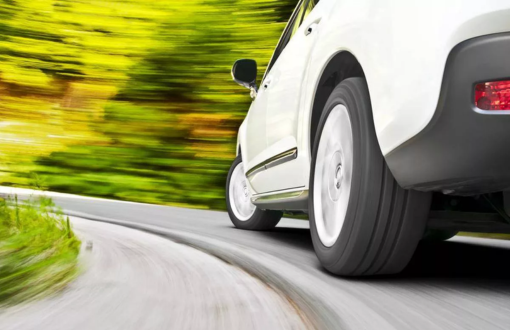No items in cart right now!
Working Hours - 8 AM To 8 PM
 March 18
March 18
Driving at high speeds can be exhilarating, but it also comes with risks—especially for your tyres. The faster you drive, the more strain your tyres endure due to heat buildup, tread wear, and aerodynamic resistance. If left unchecked, these factors can compromise tyre performance, reduce lifespan, and increase the risk of blowouts.
In this guide, we’ll explore how high-speed driving affects tyre health and share practical tips to maintain tyre longevity.
How High-Speed Driving Affects Tyre Health
One of the biggest threats to tyres at high speeds is heat buildup. As tyres rotate rapidly, friction between the road and rubber generates excessive heat, causing:
Expansion of tyre materials
Increased air pressure
Softening of rubber, making it more prone to damage
Over time, excessive heat weakens tyre structure, leading to faster degradation and a higher risk of tyre failure.
Tread wear is another major concern. High-speed driving accelerates tread deterioration, which can result in:
Reduced grip on wet or slippery roads
Increased braking distance
Higher chances of hydroplaning
Regularly checking your tyre tread depth ensures optimal traction and safer driving conditions.
High speeds affect vehicle aerodynamics, increasing drag and downward force on tyres. While performance tyres are designed to handle this pressure, standard tyres may experience:
Uneven wear patterns
Increased rolling resistance
Reduced fuel efficiency
Staying within recommended speed limits minimizes unnecessary tyre stress and improves overall driving safety.
How to Protect Your Tyres When Driving at High Speeds
If you frequently drive at high speeds, investing in racing tyres or performance tyres can enhance safety. These tyres are engineered to withstand extreme conditions and provide better heat resistance.
Under-inflated or over-inflated tyres can lead to uneven wear and higher risks of blowouts. Check tyre pressure at least once a month and before long drives.
Abrupt braking and aggressive cornering put additional stress on tyres, leading to premature wear. Drive smoothly to extend tyre lifespan.
Use the penny test or a tread depth gauge to ensure your tyres meet legal safety standards. Replace tyres when tread depth reaches 2/32 inches for safer handling.
After long high-speed drives, let your tyres cool before parking in direct sunlight. This prevents excessive internal pressure build-up.
Speed limits are set not just for road safety but also to prevent excessive tyre wear. Adhering to speed regulations reduces unnecessary strain on tyres.
Prioritize tyre health and drive safely! Regular maintenance and mindful driving habits can significantly improve tyre performance and longevity. Browse high-quality tyres online to ensure safety on every journey.
FAQs
High-speed driving causes heat buildup, increased air pressure, and rapid tread wear, leading to potential blowouts and reduced tyre lifespan.
Ensure proper tyre pressure, avoid prolonged high-speed driving, and invest in heat-resistant tyres for better performance.
Check your vehicle’s manual for recommended tyre pressure. Performance vehicles may require slightly higher pressure for optimal handling.
Inspect your tyres weekly for tread wear, pressure levels, and any visible damage to prevent unexpected failures.
Yes, racing tyres are designed for better heat resistance, grip, and durability under high-speed conditions.
Ensure safety and performance with high-quality tyres designed for speed. Check out the best tyre deals online and make a smart investment in your vehicle’s safety!
High-speed driving can take a serious toll on tyre health, but with proper maintenance and smart driving habits, you can prolong their lifespan. By understanding the risks of heat buildup, tread wear, and aerodynamics, you can make informed decisions that ensure both safety and performance on the road. Prioritize your tyre health today for a smoother, safer drive!
leave a comment